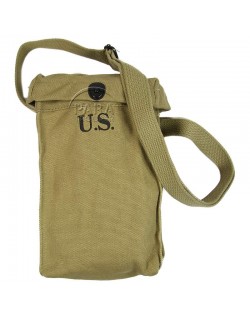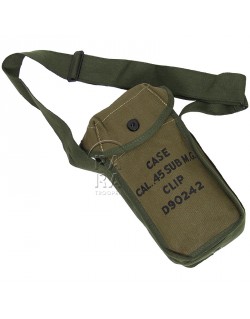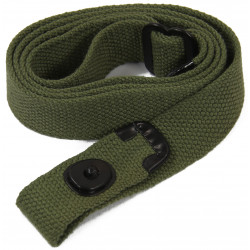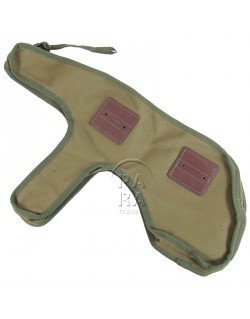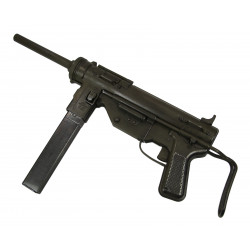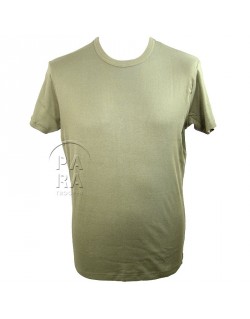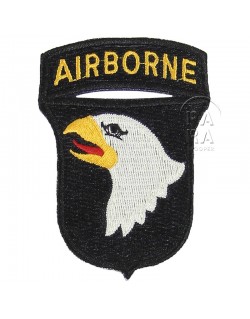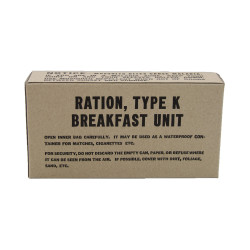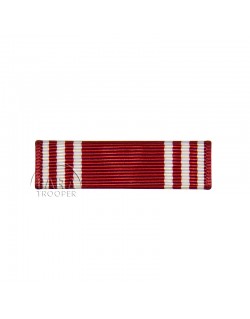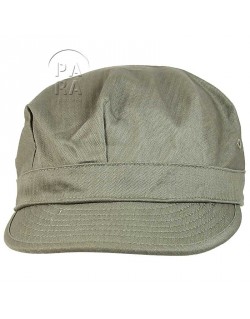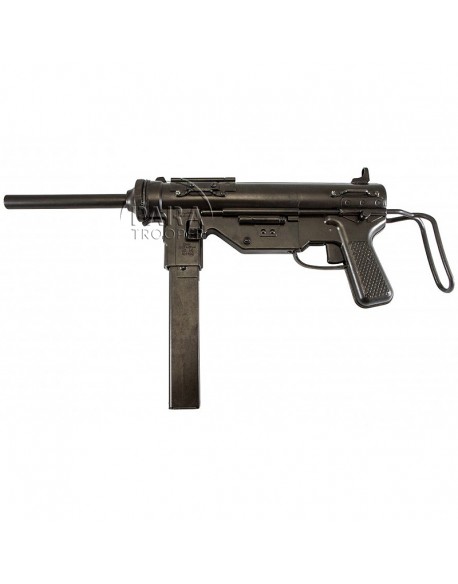












Submachine Gun M3, "Grease Gun", 1st type
Nice reproduction of submachine gun, made of metal, with simulated mechanism for loading and firing, mobile safe cover, removable magazine and retractable stock with double position.
The M3 was an automatic submachine gun designed in 1941 by George Hyde, an experienced gunsmith in the German army during the First World War and who in 1927 emigrated to the USA. The weapon was commissioned by the USA Army because of the effectiveness of the European submachine guns such as the German MP, or the British Sten, and also because of the production and cost problems of the Thompson M1928A1.
ITEM NOT SHIPPED OUTSIDE EUROPEAN UNION AND SWITZERLAND.

Description
The M3 was an automatic submachine gun designed in 1941 by George Hyde, an experienced gunsmith in the German army during the First World War and who in 1927 emigrated to the USA. The weapon was commissioned by the USA Army because of the effectiveness of the European submachine guns such as the German MP, or the British Sten, and also because of the production and cost problems of the Thompson M1928A1.




